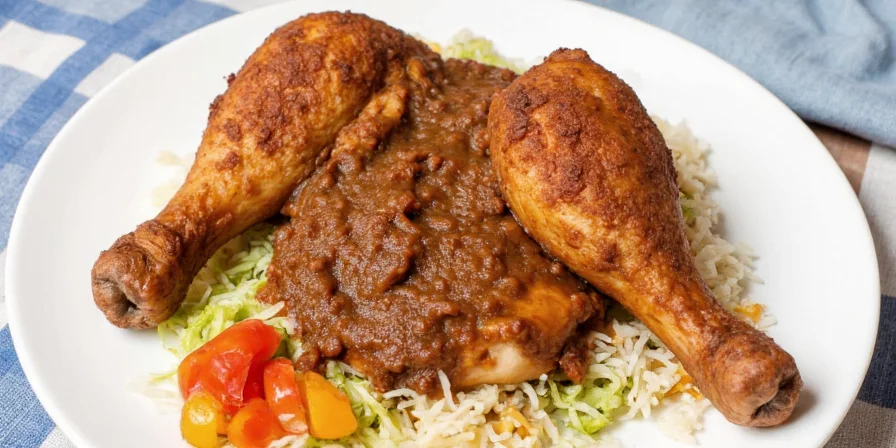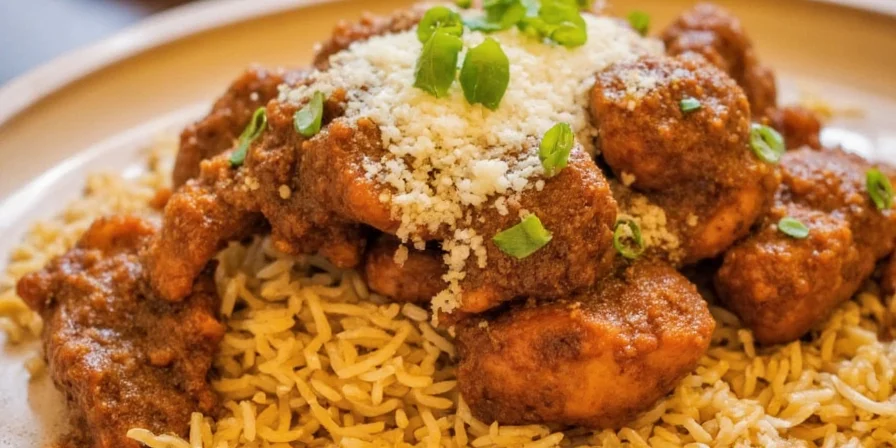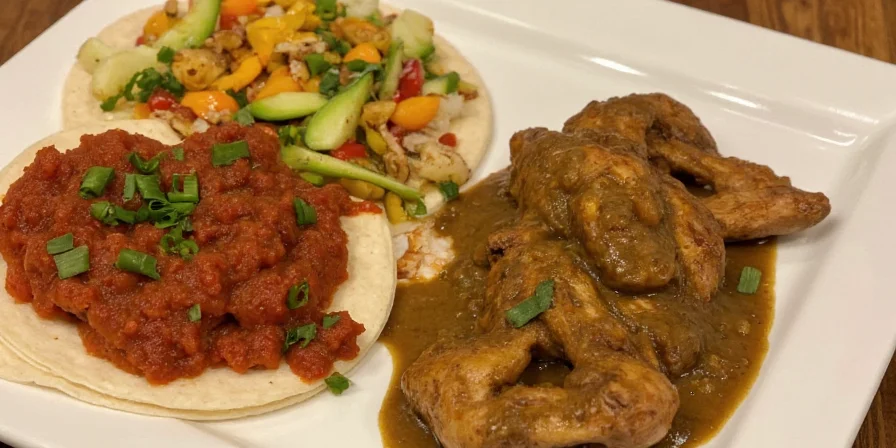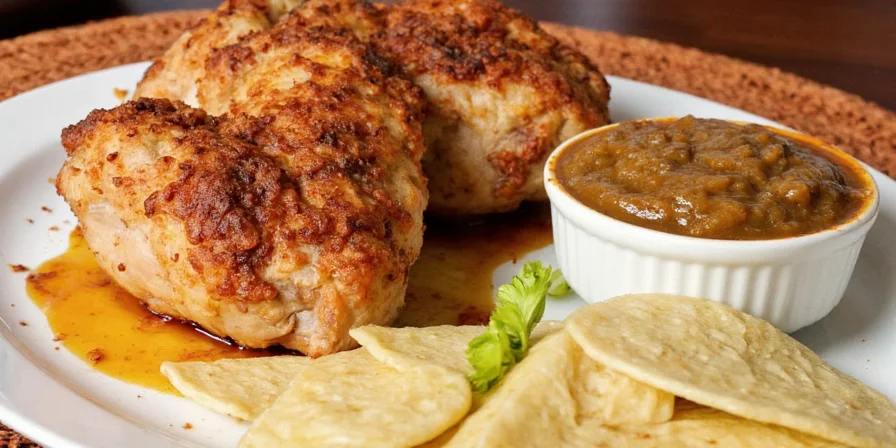From Kitchen Chaos to Mole Magic: A Chicken & Mole Sauce Recipe Journey You Can’t Miss!
Table of Contents
- Introduction
- The Global Roots of Mole
- Step-by-Step Chicken & Mole Sauce Recipe
- Pro Tips for Perfect Mole Every Time
- Mole Variations Around the World
- Pairing Suggestions & Serving Ideas
- Conclusion
Introduction: Why This Mole Will Make You Forget All Others
Have you ever tasted something so complex, so deeply flavorful, that it felt like a symphony playing in your mouth? That’s exactly what happens when you bite into a perfectly made chicken with mole sauce.
Originating from Mexico but celebrated across global spice traditions, mole is more than just a sauce—it's a celebration of flavor. In this article, we'll walk through how to create a rich, layered chicken mole dish, complete with pro tips, variations, and even a side-by-side comparison of different mole styles.

The Global Roots of Mole: More Than Just Mexican
While mole poblano may be the most famous version hailing from Puebla, Mexico, its roots stretch far beyond that one region. In fact, the word “mole” comes from the Nahuatl word molli, meaning “sauce” or “concoction.” And boy, is it a concoction!
| Mole Type | Region | Key Ingredients | Flavor Profile |
|---|---|---|---|
| Mole Poblano | Puebla, Mexico | Chiles, chocolate, almonds, sesame seeds | Earthy, spicy, slightly sweet |
| Mole Negro | Oaxaca, Mexico | Black chiles, bitter chocolate, spices | Smoky, deep, aromatic |
| Mole Verde | Veracruz, Mexico | Tomatillos, green chiles, herbs | Herbaceous, bright, fresh |
| Yucatecan Mole | Yucatan Peninsula | Raisins, plantains, ground pumpkin seeds | Fruity, nutty, mildly sweet |

Step-by-Step Chicken & Mole Sauce Recipe
You don't have to be a Michoacán abuela to make a killer mole. Here's a simplified but deeply satisfying version that hits all the right notes:
Ingredients
- 4 bone-in chicken thighs (or drumsticks)
- 2 dried ancho chiles
- 2 dried pasilla chiles
- 1/4 cup unsalted almonds
- 1 tbsp sesame seeds
- 1 small onion, chopped
- 2 garlic cloves
- 1 small tomato, roasted
- 1 oz dark chocolate (70% cacao), chopped
- 1 tsp cinnamon
- 1/2 tsp clove
- 1 bay leaf
- 1 cup chicken broth
- Salt to taste
Instructions
- Season chicken with salt and roast in a 375°F (190°C) oven until golden and cooked through (~35–40 minutes).
- Meanwhile, toast chiles in a dry pan until fragrant but not burnt.
- Soak the toasted chiles in hot water for about 15 minutes.
- In a separate pan, toast almonds and sesame seeds until lightly browned.
- Add onions, garlic, and tomato to the pan and sauté until softened.
- Drain chiles and add them to a blender with almond mixture, spices, and enough broth to blend smoothly.
- Pour the sauce back into the pan and simmer for 15 minutes.
- Add the chopped chocolate and stir until melted and incorporated.
- Taste and adjust seasoning—hint: a splash of vinegar can balance the richness!
- Pour the mole over the roasted chicken and let it simmer together for another 10 minutes.
Pro Tips for Perfect Mole Every Time
Making mole isn’t rocket science, but there are definitely ways to elevate your game. Here are some handy tricks and life hacks to keep your mole on point:
- Toast your spices first. Even pre-ground spices get a second wind when briefly toasted before adding to the sauce.
- Don’t skip the soaking step. Rehydrating the dried chiles brings out their natural sweetness and softens the heat.
- Blend in batches. Overloading your blender = messy kitchen + broken appliance. Don’t risk it.
- Simmer slow and low. Letting the sauce cook down gently intensifies flavors and thickens the texture beautifully.
- Add a secret splash. Some swear by a drop of apple cider vinegar or a pinch of sugar to balance the earthy, bitter tones.

Mole Variations Around the World: What Else Can You Make?
Mole has traveled far and wide, adapting to local tastes and available spices. Here are some international twists you might find intriguing:
- Mole-inspired stews: In parts of the Middle East, chefs use similar spice blends with lamb and dried fruits for hearty stews.
- Chocolate curry: In India, the idea of combining savory chiles with cocoa appears in regional dishes like Goan vindaloos.
- African peanut mole: West African groundnut soup shares surprising similarities—roasted nuts, chiles, tomatoes, and warming spices.
- Indonesian rendang meets mole: Slow-cooked beef with coconut milk and dark spices? It’s like mole went tropical.
Pairing Suggestions & Serving Ideas: How to Serve Your Chicken Mole Like a Pro
You’ve made the mole. The chicken is tender. Now what? Here are some top-tier serving ideas to take your meal from “good” to “oh wow!”:
- Rice: Warm white rice is the classic base. Absorbs the sauce like a champ.
- Tortillas: Warm corn tortillas are perfect for wrapping up leftovers the next day.
- Plantains: Sweet fried plantains contrast beautifully with the earthy, spicy mole.
- Cilantro-lime slaw: For brightness and crunch, especially if you’re going for tacos or burritos later.
- Drink pairing: Try a chilled horchata or a light-bodied red wine like Tempranillo.

Conclusion: Your New Go-To Dish for Any Occasion
At the end of the day, mole is more than just a sauce—it’s a story told through layers of flavor, tradition, and passion. Whether you're making it for family dinner, a holiday feast, or just because you want to feel fancy on a Tuesday night, chicken mole will never disappoint.
Remember: Mole isn’t about perfection—it’s about patience, playfulness, and enjoying the process. So grab those chiles, embrace the mess, and get ready to impress everyone at your table.











 浙公网安备
33010002000092号
浙公网安备
33010002000092号 浙B2-20120091-4
浙B2-20120091-4